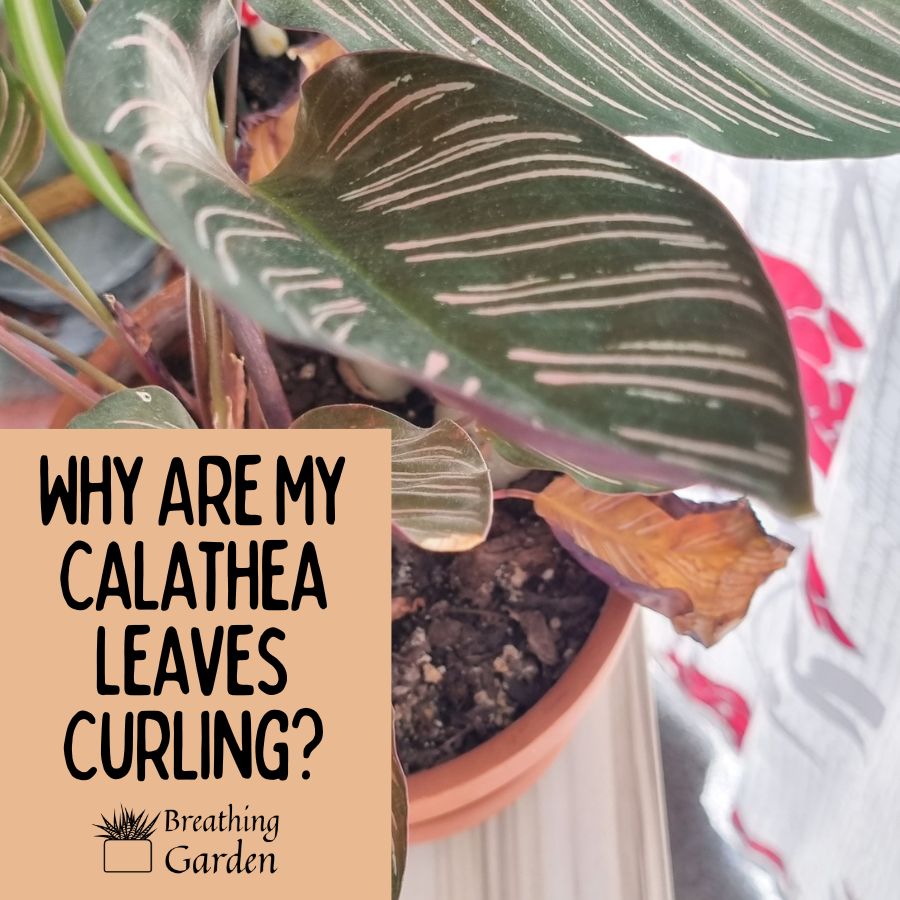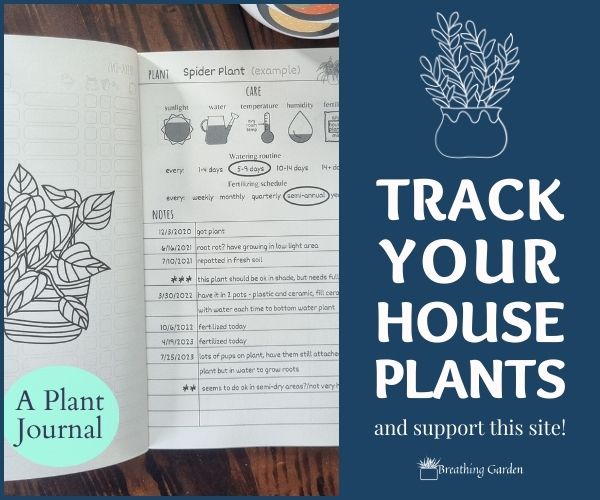Are your Calathea leaves curling or folding inward and sending you worry signals? There are quite a few reasons this can be happening. Most of these are related to care issues, including doting on your plant too much or too little, or it’s not in the best spot in your home. The good news about this is your calathea is telling you it needs help! Now it’s time to figure out what the culprit to these calathea curling leaves is.
*This post may include affiliate links. When you purchase items from these links, we will receive a small commission, at no extra cost to you, to help support this website. Thank you for your support! Read more ->
Calathea leaves seem to be pretty picky plants with their environment and care, so don’t stress too much if your plant starts showing that it’s leaves are curling or always standing straight up (read about that one here).
Why Are My Calathea Leaves Curling?
The 5 most common reasons your calathea leaves might be curling can include underwatering, too much direct sunlight, lack of humidity, dramatic temperature fluctuations, and over fertilizing. With those ideas in mind, let’s look into why these could be the cause of the curling leaves and how to fix the problem.
Underwatering Is A Main Cause of Calathea Leaves Curling
Calathea plants are stunning with their bold, vibrant colors and intricate patterns on their leaves. However, if you notice that the leaves are curling, it is very likely because underwatering. While it might seem like a good idea to water plants less frequently to avoid overwatering, this is not always the best solution. If your leaves are curling, the first thing to check is the soil. Is it extremely dry? If so, then the solution is to water your plant!
If the soil becomes too dry, the leaves will curl in an attempt to conserve moisture. To prevent this, make sure to water your calathea plant regularly. Try to create a routine where weekly you check the moisture of the soil to see if it needs to be watered or not.By doing so, your plant will thrive and continue to showcase its stunning beauty.
Excessive Direct Sunlight Causes Calathea Leaves Curling and Burning
Calatheas are beautiful houseplants that feature bold and intricate leaf markings. However, too much sunlight can wreak havoc on their appearance. Direct sun exposure can have two different effects on the leaves. Initially, it will bleach the color of the leaves. Then it can cause the leaves to curl and burn.
In order to protect your calathea from the harmful effects of the sun, be sure to place it in a spot that gets bright, filtered light rather than direct prolonged sunlight. This will help your calathea thrive and maintain its stunning appearance for many years to come.
Try having your plant in an east facing window!
Dry Air Can Make The Leaves Curl
The lush, vibrant leaves of a calathea plant can add a touch of tropical beauty to any indoor space. However, despite their reputation as low-maintenance houseplants, calathea plants can be finicky when it comes to their living conditions. As said before in this paragraph, they’re tropical. This means that they need more humidity than houses in many locations can have.
If it’s too dry of an environment, you may notice the leaves curling. Without a sufficient amount of moisture, the leaves can become dehydrated and begin to curl. To solve this, try placing your calathea near other plants to help increase the humidity near them, or you may want to invest in a humidifier.
Extreme Temperature Swings Also Curls the Leaves
These prayer plants thrive in warm temperatures, which makes them a perfect indoor companion. However, sudden temperature swings can cause the leaves of this plant to curl, which is not what you want! Because of this, try to keep it from directly being in a windowsill even if that window doesn’t get any full sun. These are the places in your home with the most temperature fluctuation.
If your Calathea is right next to a window or door that is either frequently left open or heats up during the day/cools at night, try moving the plant. Even just a foot away from a window will help extremely with reducing temperature fluctuations on the plant.
An Over-Fertilized Calathea Plant Also Gets Curly Leaves
Some plant owners try to do the best with their plants, but it can actually harm the plants. This can happen when something is being over-fertilized. You may think you’re helping the plant with the nutrients it needs, but could actually be burning the roots and cause the leaves to curl inward and turn brown.
These plants only need to be fertilized a few times a year, primarily in spring and summer, and only a small amount. Make sure you’re choosing the right type of fertilizer for a calathea and following the instructions on dose that’s on the container.
If you think you have accidentally over-fertilized your plant and that’s why your calathea leaves are curling, there are a few things you can do! Try flushing the soil to remove excess fertilizer. Or repot the plant in fresh soil. Give it some time and proper care, and your calathea plant will hopefully bounce back in no time.
In Summary: Why Are My Calathea Leaves Curling?
After reading about the 5 main causes of calathea leaves curling, you should have an idea of the most likely cause for your plant. If it is underwatered, increase your watering frequency or add a self-watering system to your plant setup. If sunlight is a factor, move it to a place where it gets less direct light. Try to increase the humidity in the area of your plant to keep the leaves flat/straight. And be sure to keep your plant out of a spot that has major temperature fluctuations and to not over fertilize the plant!
Caring for calatheas often requires trial and error, but with patience and practice you’ll be able to give these tropical beauties the care and love they need! Good luck and happy gardening!



